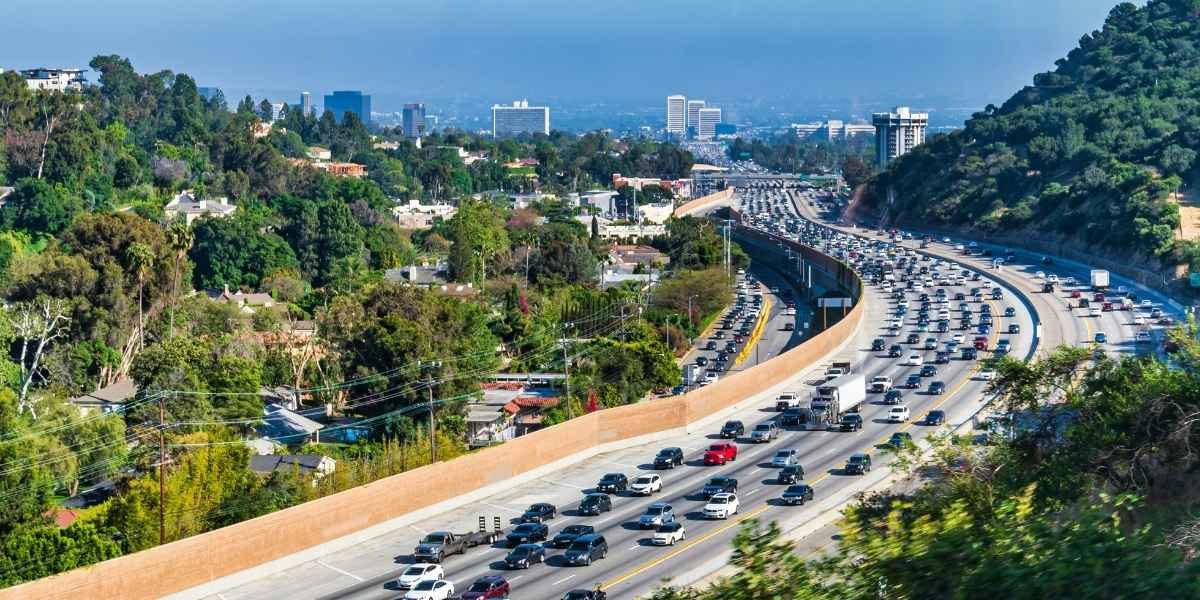How can California manage its increasing traffic challenges? With growing populations and expanding urban areas, the state is exploring adaptive traffic systems as a potential solution. These systems aim to address congestion, improve traffic flow, and provide a more sustainable way to manage roadways. But what exactly are adaptive systems, and can they deliver on their promises?
Adaptive traffic systems use real-time data and technology to manage road conditions dynamically. Unlike traditional systems with fixed timing, adaptive systems adjust traffic signals and other infrastructure based on current conditions. By adapting to actual vehicle flows, they aim to make commuting more efficient and reduce delays. But their success depends on various factors, including technology, infrastructure investment, and public understanding.
Read also: Why Are Last-Minute Travel Deals in California So Popular?
How Do Adaptive Traffic Systems Operate?
Adaptive traffic systems rely on a combination of sensors, cameras, and data-driven algorithms to manage roadway activity. These tools monitor traffic in real time, gathering information about vehicle volumes, speeds, and patterns. Based on this data, traffic signals adjust to reduce congestion or prioritize certain routes.
For example, if one direction of an intersection becomes heavily congested, the system can extend the green light to alleviate the buildup. These adjustments aim to prevent traffic bottlenecks and maintain a smoother flow of vehicles. The integration of connected vehicles—cars equipped to communicate with traffic systems—could further enhance this adaptability.
Machine learning plays a crucial role in these systems, enabling them to learn from past traffic patterns and anticipate future conditions. Over time, this capability could allow adaptive systems to not only react to real-time data but also predict and prevent potential congestion points.
Why Are Adaptive Systems Necessary for California?
California’s traffic issues are among the most pressing in the United States. Major metropolitan areas, including Los Angeles and the Bay Area, often rank high for congestion levels. Prolonged delays, stop-and-go traffic, and idling vehicles lead to economic losses, environmental damage, and reduced quality of life for residents. Traditional traffic control methods, which use pre-set signal timings, struggle to accommodate these growing challenges.
The introduction of adaptive systems seeks to address these issues by improving efficiency on California’s roads. Real-time adjustments to traffic signals can reduce average wait times and help vehicles move through intersections with fewer stops. Over time, these improvements could lead to measurable benefits, including shorter commutes and fewer hours wasted in traffic.
However, implementing these systems across California’s vast and varied road networks is no small task. Urban areas often face different challenges than suburban or rural locations, requiring customized solutions to meet the unique needs of each community.
Can These Systems Reduce Environmental Impact?
One significant advantage of adaptive traffic systems is their potential to lower vehicle emissions. Cars emit the most pollutants when idling at red lights or accelerating after stopping. By optimizing signal timings and reducing unnecessary stops, adaptive systems can help vehicles maintain steady movement. This, in turn, could reduce the release of harmful pollutants into the atmosphere.
For a state like California, which has ambitious climate goals, the potential environmental benefits are important. Transportation is one of the largest contributors to greenhouse gas emissions in the state. While adaptive systems alone cannot solve this issue, they represent a meaningful step toward cleaner, more sustainable transportation.
By promoting smoother traffic flow, these systems could also contribute to reduced fuel consumption. Drivers spend less time idling in traffic, which may lead to savings in fuel costs over time. While these benefits are incremental, they support broader efforts to create a more environmentally friendly transportation network.
What Challenges Could Limit Their Effectiveness?
Despite their promise, adaptive traffic systems face several challenges that could affect their effectiveness. First, the financial investment required to implement these systems is substantial. Upgrading traffic signals, installing sensors, and maintaining the technology demand significant funding, which may not always be readily available.
The reliability of data is another critical factor. Adaptive systems depend on accurate, up-to-date information to make decisions. Any gaps in data, whether due to equipment failure or communication breakdowns, can reduce the system’s ability to respond effectively. Ensuring consistent performance requires ongoing maintenance and technical support.
Scalability is also a concern. While smaller cities may find it easier to integrate adaptive systems, larger urban centers like Los Angeles face greater complexities. These systems need to be carefully tailored to accommodate diverse traffic patterns, heavy vehicle volumes, and a mix of public and private transportation.
Public perception and understanding of adaptive systems also play a role. Californians may need to see clear, tangible benefits—such as reduced commute times or improved air quality—to fully embrace these systems. Building trust in the technology and addressing potential concerns about data privacy or system failures will be critical to their long-term success.
Are Adaptive Systems the Future of Traffic Management?
Adaptive systems represent an important step forward in traffic management, but they are not a complete solution. They work best when combined with other strategies, such as public transportation improvements, infrastructure upgrades, and policies that encourage alternative commuting methods. Together, these approaches can create a more comprehensive strategy for managing California’s transportation challenges.
Looking ahead, adaptive systems are likely to become increasingly sophisticated. Advances in artificial intelligence and big data analytics could enable these systems to not only react to traffic conditions but also anticipate them. For example, systems might use weather forecasts, event schedules, and historical traffic data to predict congestion and adjust traffic flows proactively.
The integration of autonomous vehicles could further enhance the potential of adaptive systems. These vehicles could communicate directly with traffic infrastructure, creating an even more seamless flow of information. While this future remains uncertain, the foundation being laid by adaptive systems positions California to embrace such innovations when they become viable.
Read also: The Rise of Electric Vehicles in California
What Does This Mean for California Drivers?
For many Californians, the prospect of reduced commute times and less stressful drives is appealing. Adaptive systems have the potential to improve daily life by making roadways more efficient and reliable. However, the success of these systems depends on thoughtful implementation, sufficient funding, and public support.
Traffic congestion is a complex issue that requires a multifaceted approach. While adaptive systems alone cannot solve all the challenges, they offer a promising tool to address some of the most pressing concerns. Over time, as technology advances and these systems evolve, they may become an integral part of California’s transportation network.
By embracing innovation and focusing on long-term solutions, California has an opportunity to create a more efficient, sustainable, and user-friendly traffic management system.








